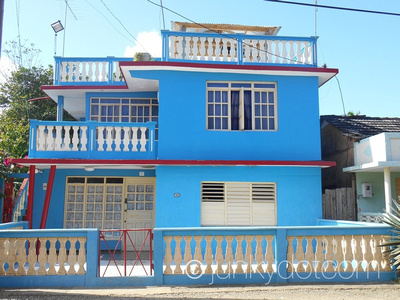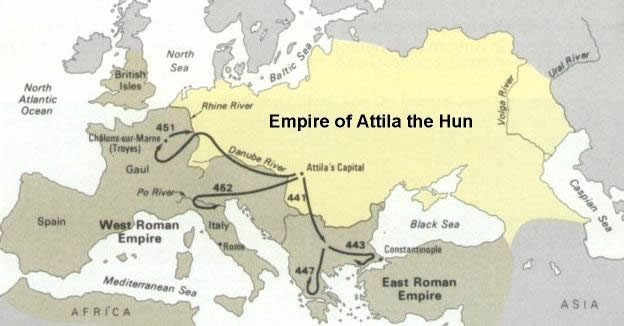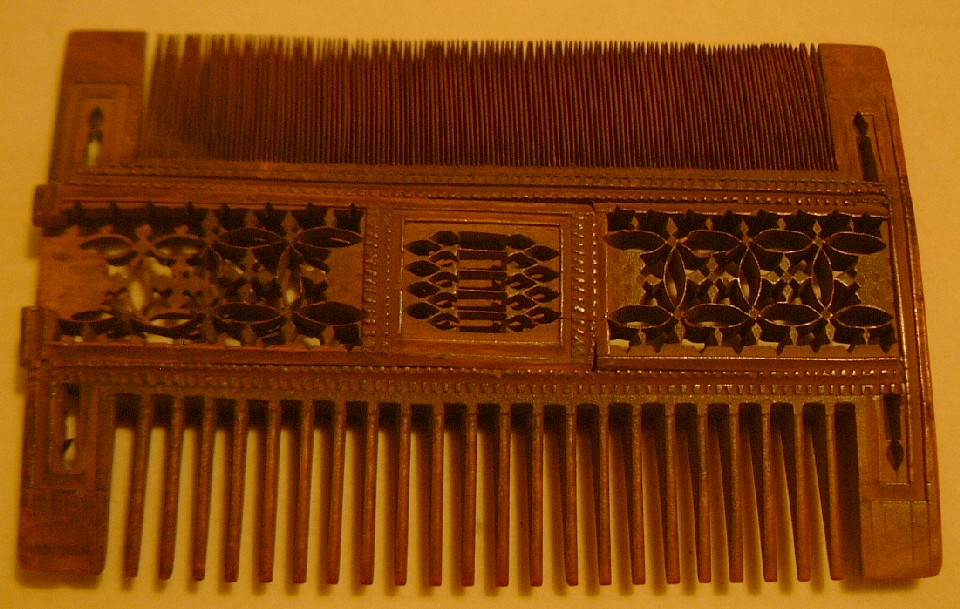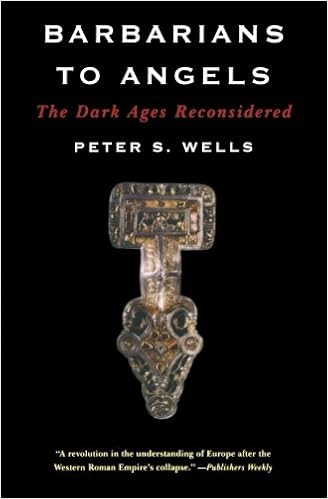. . . . The state of exhaustion and a bit of gippy tum continues. I continue my attempts to catch up and get back on keel, to greater or lesser success, depending on. This weekend I ate something that wasn't toast or mashed potatoes, but I still can't read and stay awake. This weekend I did watch some television.
Netflix is currently streaming two series that could be specifically targeted for me, personally, and my current state of being. Despite the variety of choices available it is only these two that appealed to me enough to sit and watch, instead of just going to bed.
The first one is the Netflix original 8-part documentary, The Cuba Libre Story (2016) the story of Cuba, which, naturally centers Fidel's Revolution, for better or worse. For one thing, the supply of contemporary television and film footage is boundless, the number of recognizable figures involved are without number, and a lot of them are still living, if only barely, including people with Fidel at the beginning, but who went into exile either voluntarily or to save their lives. There is an international cast of historians, authors and journalists, specialists all in Cuban history and / or the Revolution, all ready and willing to talk on camera. I have some quibbles with the perspective on certain things, including "the mafia corrupted Batista." It seems to me they skid over his fundamental character, which needed no outside pressure to become corrupt. Nor do any of the talking heads explain why and how Batista came back from Miami to take power in Cuba, this time as tyrant and dictator. They also skip over the role of Nixon in this regime, among other things. There's more than a whiff at times of the producers falling far back from confronting certain issues in the interest of not offending certain people, whether inside or outside of Cuba.
This is an outline of 20th century Cuban history, heavily weighted, while pretending otherwise, to the perspective of the anti-Cubans, the old CIA (that failed so hugely in its long objective to overthrowing Fidel and the Revolution. This becomes most obvious in the last two episodes, particularly insisting that Fidel was instrumental in Cuba trafficking in the coke trade to the US. That much of this cannot be true is due to the obvious: the state would never allow drug gangs in Cuba -- they would be a challenge to the hegemony of the state.
There are some other elements in the series that are outright lies that leap out. There are some elements in the series that are outright lies that leap out, particularly what they say about the children. People who have worked with them, meaning, literally work, at jobs, have told us, for instance, that they worked along side one of the kids for months, and never knew who the kid was. Raul's daughter, who works so hard for LGBT rights and recognition, rides the public buses to work every day. No playboying around at all, unlike what the docu talking heads state.
As said, the more episodes in, with the more CIA operatives, Cuban double agents (whose whole life is about lying plausibly, meaning they believe themselves what they say), the more exiles, the more people out of the former Soviet Union, etc. testify, the more problematic the series's plausibility becomes.
Grace and Frankie's 3rd season went up on Netflix this weekend. Lily Tomlin! Jane Fonda! It makes me laugh out loud here all by myself at least three times during each half hour episode. Also Sam Waterson! and Martin Sheen! as their ex-husbands who left them for each other. The actors playing their children are almost as splendid as Fonda and Tomlin. They also fill in their roles more so every season. Some might criticize the glossy, monied, perfect southern California milieu of the show, but within the context of the comedy, which is these people are spoiled and often immature, while experiencing some of the inconveniences and scares that they were dumped by their husbands, and come with aging, as well as the humilation, reconciliation and other tribulations that accompany their situations. These will be there for everyone, no matter how well-off one is. The gloss allowa us to laugh at and with them guilt-free.
In one of this season's episodes both women have their backs go out simultaneously. They're marooned on the floor -- with no way to contact anyone. It's a prolonged scene that is both genuine and very funny. At times Lily Tomlin channels the Comic Spirit directly, without any buffer between herself and it -- and what she does is randomly spontaneous, improvised (according to an interview with her I heard not long ago). Fonda plays off Tomlin's antic inspirations with perfect timing and reaction, enhancing and deepening the scope of these scenes. Their two characters have now gone into business together, marketing the the perfect vibrator for older women. Their search for capitalization of the vibrator's manufacture within the weirdness of our contemporary world of business finance is an endless source of comedy as well as very pointed criticism of national economic structure that no longer has any interest in making anything, only in the marketing of an online meme. Highly, highly recommended!
Monday, March 27, 2017
Sunday, March 26, 2017
Art in Santiago - Fiesta del Fuego
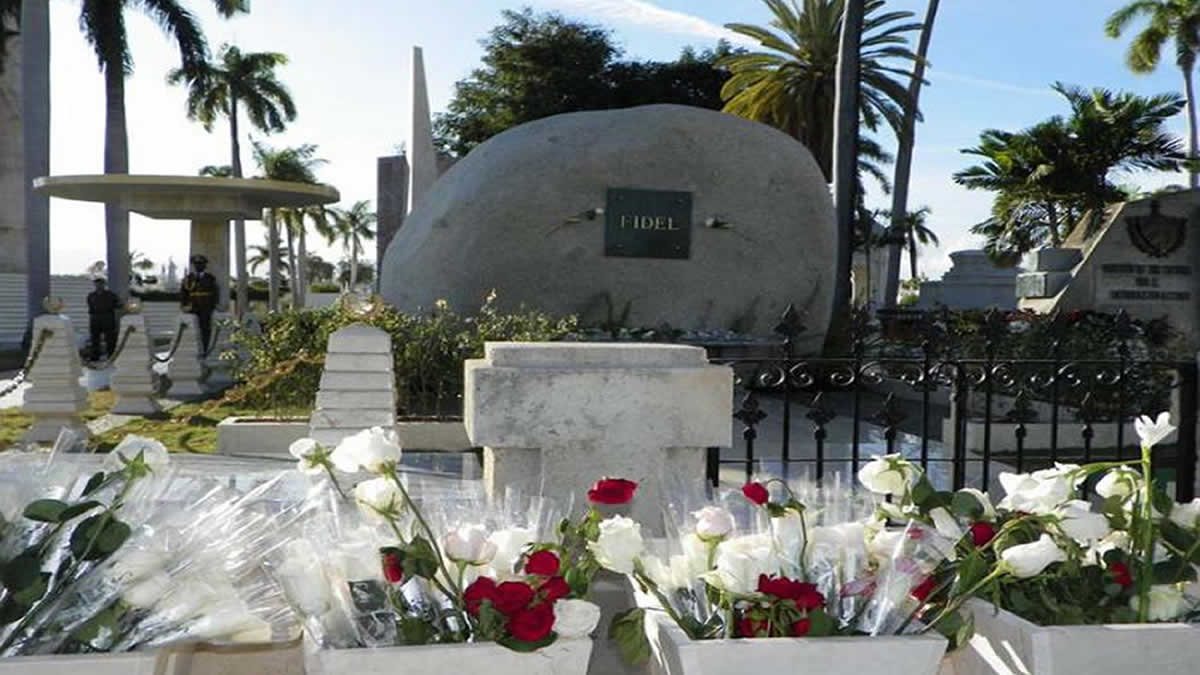 |
| The Rock on which is founded the first truly independent Cuba. This is Fidel's memorial. Like everything else in the Cementerio de Santa Ifigenia in Santiago. I couldn't get a decent photo -- we had to move too fast. So many people, in their best clothes with their children, were waiting in line to pay their respects. Island Cubans speak of him as 'Fidel' (see the plaque, simply named 'Fidel'.). Miami and Others are the ones who call him 'Castro'. This boulder was brought down from the Sierra Maestra, shaped and sculpted as his only memorial. His is so much smaller than Jose Martí's mausoleum, which is the towering focus of the eye when reaching the Cemetario, This is deliberate, denoting to history that Martí is the true father of Cuba's independence and Fidel is his apóstol . I honestly was moved, as I always am during periods in eastern Cuba, when contemplating the Revolution. |
 |
| This time around Santiago I saw the great art that is Jose Martí's mausoleum in Cementerio de Santa Ifigenia, en Santiago de Cuba. This was my first visit to Martí's mausoleum. The beauty of the design and execution, elegant, simple, harmonious and filled with so much historical content if one can read the symbol; ls another expression of monumental art that provokes genuine awe, joy (because it is so beautiful) and sorrow, for how, despite his death as a martyr to independence, the US saw to it that Cuba still was not at liberty. There is earth under his tomb (inside, at the bottom) from the United States, as he spent so much time there raising support for Cuban independence.
Cubans have so much justifiable pride in their history, and they remember it.
. . . . The Festival de Trova was being celebrated all through eastern Cuba, the birthplace of this great singer - songwriter balladeer form of music, which is part of the fairy tale of what, if anything, besides Fidel, everyone knows of Cuba, which is The Buena Vista Social Club.. At the same time we visited the cemetery, there were tours visiting the graves of the Buena Vista singers buried there.
Compay Segundo's tomb.
At one point as we ambled under our sun block, hats, long sleeves, shawls, and umbellas, to the great delight of strangers and Travelers alike, Ned broke into one of the famous songs -- the title of which I cannot ever recall, though it's one of the few songs to which I know the lyrics.
The sun, o the sun was brutal.
|
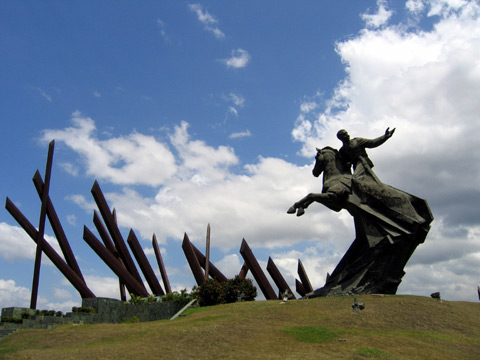 |
| Monument to Antonio Maceo in the Plaza de la Revolución of Santiago de Cuba; by the time we got to this brilliant monumental art, I was O-U-T, and thus couldn't take my own photo this visit (I've been there previously though and have an entire album of photos of this impressive work). The sun was at brutal mid-day. It's really difficult to show the vast scale of this monument. Those spikes are memorials to the machetes wielded by the Afro-Cuban mambises in the wars against Spain, 1868 - 1878 (the end of the US War of Southern Rebellion and Emancipation also ended the African Slave Trade to Cuba) and the War of Independence 1895 - 1898 (which was highjacked by the US government on behalf of US corporations). I think . . . this was just about the last thing of Santiago we saw before driving back to Holguín's classic soviet era hotel Pernik from where the next morning we'd go to the airport. I wasn't feeling well, so had neither slept nor had any caffeine, so don't remember clearly. The Pernik is in the process of being renovated, one section at a time. I liked that hotel, and I slept really hard on that giant bed my last night and breakfasted beautifully in the restaurant the next morning, where several tables around mine hosted Midwestern and Southern US biz folks with their wives. |

. . . . The Fiesta del Fuego is the event to which the Ministry of Culture of Cuba invited us to participate, including a presentation of The American Slave Coast.
The most complete history of this event in English can be read on this site advertising tours to USians to visit. As can be seen, this isn't just "theoretical" and academic, but involves an enormous variety of music, art, theater and other kinds of cultural expressions, as well as fun in the streets, drinking, eating and dancing con el pueblo. Scroll down to History - Fiesta del Fuego.
Every July, the heat of Santiago de Cuba is tripled...added to the high temperatures normally felt in the eastern Greater Antilles is 1. the warm hospitality of the people of Santiago and 2. the Fiesta del Fuego.
The 'Feast of Fire', or 'the Caribbean Festival' is one of the most important cultural events for the Ministry of Culture of Cuba - organised by the 'Casa de Caribe'. It includes the participation of over 200 thousand artists and intellectuals from approximately 18 countries and a similar number of national participants, who meet between 3 and 9 July in forty spaces around the city of Santiago de Cuba, some 140 individual music and/or dance performances, magic/religious ceremonies, art exhibitions and theoretical activities to exchange anything having to do with history, religion and culture of the area. And that's one aspect that most distinguishes the Caribbean Festival from the rest of the international events held in Cuba! It is the merging of cultures together with the abundance of opportunities for academic discourse - all with folk art, tradition and expressions of identity of indigenous Caribbean peoples at the roots. Naturally attracting people from as far away as Australia, Hungary, Holland and Israel.
Since its founding in April 1981 this popular carnival has managed to honour the most authentic and spiritual roots of all Caribbean countries and fills the streets of Santiago de Cuba with a tantalizing mix of mysticism, music and wisdom. And apart from the popular street activities, other theoretical events as well such as: workshops on poetry, orality, theater, dance, religion and film series, concerts and theatrical scenery take place during the fesitval.
As a rule, each year the Caribbean Festival has paid tribute to a country or group of countries. Over the years heartfelt homage has been paid to Haiti, Guyana, Brazil, Puerto Rico, Dominican Republic, Venezuela, Mexico, Honduras, Africa, the francophone and anglophone Caribbean, Colombia, Panama, Netherlands Antilles, Aruba and Suriname.
But if there exists in the Caribbean Festival any expectations, especially at the grassroots level, they are without doubt the Fire Parade, which begins with a ritual salute Nzambi Congo, supreme entity among practitioners of Palo Monte religion, delivery Mpaka of the emblem of the Feast of Fire and the Burning of the Devil, a raging storm of drums one of the most central avenues of the city as a farewell to groups and participants of the current Festival.
Then, by the sea the huge effigy of the devil is set alight and the burning paves the way for the next Festival meeting in 12 months time.So, as can be seen from this site, anyone can go and see all the activities.*
-------------------------------
* How this tour company can charge such low prices -- really, $1150 for 20 days? Where are they staying and eating? Cuba is very pricey for even minimal comfort. Of course el V's charges include payments to all the groups and artists that perform for his Postmamboists, for 11 days. These aren't public performances to which tickets are bought. They are private performances, up close and personal, interactive with Q&A's etc.
Other tours targeting Cuba charge a lot more than the above organization, such as this one, which requests a $1300 deposit. Here's another one.
Saturday, March 25, 2017
Cuba Libre
I got bitten by something the first or second night in. Due to having to move so fast and the dimness of the light in the hotel rooms (hotels very nice!), I didn't notice the big bruise on my neck until my fingers encountered a series of large bumps radiating from my throat and around to the spinal bump below the skull. I got scared, thinking of eggs laid, etc. But it was a rash (which in Cuban Spanish comes out as 'herpes' thereby scaring me even more) I was told by the clinician I was taken to see, irritated by sweat and my long dangling earrings. Soap and water. I used mouthwash as a disinfectant too, washing it frequently with a cotton swab, since sweat was unavoidable. I put cortisone on it too, though first neosporan.
 |
| Our Lady of Assumption Church in Baracoa. It houses what remains of the Sacred Cross of Parra. planted by Christopher Columbus in 1492 -- but it is made of native Cuban wood, thus not from Europe. This bit of material history honestly gave me shivers when I viewed it. |
 |
| This is what remains of a much larger cross. Over the centuries pieces were taken as holy and material history relics. Now what is left remains on public display but behind a glass enclosure. |
My own ankles swelled long before we ever got of the Holguín airport and to the hotel -- recall we arose at 3 AM and then didn't get to the hotel until around 4 PM. This was followed almost immediately by dinner -- with scheduled music at the lovely restaurant, not a group assigned by the state -- and then to another music event -- with those terrible seats. The circulation is cut off for the entire time. This may be where I got bitten, since the tables were on a (beautiful) patio.
By the time we did the reverse trek and B and I got back to Thompson Street -- I've never been so depleted in my life. Not only physically, but mentally. There was never any time to process what we were seeing and hearing. B commented to me on the way home that maybe this time "even el Vaqueor gets it, that he was over-programmed." I was too worn out, hurting and sick to sleep the night we got back. So up at 6 AM -- another night of less than 5 hours of sleep. But by 6:30 PM Wednesday I was O-U-T. Slowly my bedtime has been inching a little later, every night now. I may make it to 10 PM tonight!
However, as on the January 2016 Western Cuban music tour, this was a most splendid and intrepid group of Travelers. They took everything in stride and they loved the music. Their only criticism, if they had any, was, they'd have liked some time off and not such a rigorous and relentless schedule. They were wonderful and they are what made the trip work all the way down the line. I loved them all and enjoyed getting to know them so much. One has tended to forget that our nation is filled with kind, intelligent, decent, generous people who are also fun to hang out with. Just this alone was good for us all.
Nevertheless, I was still astounded at how quickly "the bus" bonded with each other, our guides and the driver -- guide and driver this time calm, patient, cheerful, cooperative and eager about our activities, the opposite of the driver and guide on the January 2016 tour.
B also mentioned during the trek back home that the inability to spend much if any time online with the devices also incited people to interact with each other, the landscapes and experiences much more than if there was constant internet service. I'm not sure, as though not music professionals, (which so many in the January 2016 expedition were).
That we weren't predominately professional music people didn't matter -- as they loved the music and had so much experience traveling in places that aren't always comfy. All have specialties and professions, and whatever was needed at a moment, one of would probably be able to provide. Some of us are essentially introverts that can find spending every waking moment with other people not always easy, but we all managed that splendidly too, and that has to do with who these people are. We understood each other.
The eastern part of Cuba has been having a terrible drought. Santiago had seen no rain for year. I arrived, however -- and the rains began! Just as on my trip in January 2016, it rained and rained, almost all the time. While on Ned's other two trips with Travelers, during which I stayed home, there was not a drop of rain. So Santiago owes me . . . and it is indeed, by its lights, repaying -- see further down . . .
How quickly the trees, flowers, crops and other botanicals, the whole countryside, responded to even a little rain. The dried out trees began perking immediately, so much so that it was visible at least to me, who recalls what this part of the world usually looks like. By the time we left, the sides of the mountains that were brown as we flew from Ft. Lauderdale into the airport of Holguín, were turning green. Maybe I could hire myself out to drought-ravaged places? But wait! What about my own city and state?
The eastern province, Oriente, has changed enormously. It's still the poorest part of of Cuba, and Guantánamo the poorest of the poor parts. I have been there before though, and to my eyes, it too looked enormously perked up, materially. Additionally, there were things I wanted to buy as gifts, which I've never had the least interest in doing in Havana, and in Holguín particularly, the center of the diversified agricultural region, the airport tiendas were a thousand thousand times nicer -- the departure lounge in every way was nicer -- than Havana's Jose Martí's. Good place to get duty-free. The things I bought outside of the airport are still in Ned's suitcase, as I swapped such things out in exchange for taking all his dirty laundry home -- mountains and mountains of dirty laundry from both of us -- an expedition in a hot, sweaty and rainy-to-monsooning period will do that.
I was so happy finding things for gifts even more, maybe, than my other favorite totally personal bit -- when a brilliant woman from Alabama, who was raised a good deal in San Antonio, and now, among other things runs white water rafting expeditions down the Grand Canyon for challenged people who would otherwise never be able to have such an experience -- blind people, people who can't walk, autistic -- and imagine what kind of organization and back-up there is for this! -- well, Martha and I broke protocol and went and peed in the monte instead of standing in line for the baño, standing guard for each other. We felt like such outlaws. 🚽 Then A bought us beers, applauding our pluck, beers since we'd peed we now dared drink before getting back on the bus -- and the beers were -- Heineken, not the national Bucanero or Crystal. 🍺
El V left us early on Tuesday, the day the rest of us flew back to the US. He's still in Havana; yesterday he had lunch with Pablo Milanés -- a very big deal.
Wednesday, el V and CD were summoned to a meeting with the two women who run the Casas de Cultura of Cuba, and Culture policies and activities in general. These officials are 1000% behind what he and CD are doing with these Postmamboist Music seminars and want more -- he called me from habana vieja's casa de los abanicos where he was replacing my worked-to-death fan. They were laughing, and I would even describe Cd as giddy -- something one doesn't see often. Again as Ben observed on our flights back to NYC we didn't get to see her brilliant, beautiful smile and laugh much this round -- she was far too busy (she's also organizing Cuba Disco, the annual Cuban international music festival in Havana, which is coming right up) and anxious that everything go right -- working working, working, every minute.
I had told them both I was never going back to Cuba -- it's just too physically hard, but from casa de los abanicos Ned chortled, "O yes you are!" Both el V and I are officially invited to a cultural and history conference in Santiago early in July. The conference is going to pay for our airfare and hotel !!!!!!! -- Cuba!!!!! paying for somebody!!!!! -- to do a presentation of Slave Coast.
Well, it will be good preparation for what we will have do for the Vera Cruz performance in October -- in Spanish. And if I didn't go, it would be a dis to those who invited us, and that wouldn't be good for el V. I can't do that. Also, I . . . don't . . . think . . . I have to ride a bus for hundreds of miles . . . . and never get any sleep.
The breadth of music and culture the Travelers experienced -- is not to be compared with anything others get out of going to Cuba, at least in a group. And much of what the Travelers experienced could not be set up for an individual. Without el V and CD, this can't happen. No one can copy his tours. Nobody else knows all the ground, the people and have the connections and experience -- and the trust of everyone involved.
It was so good to be away from everything here.
We all felt that way. While in Cuba no one was impatient to connect when connection was possible. People checked in on their kids and so on when opportunity arrived (kids basically adults, of course, not little kids or infants), but otherwise didn't bother. Had no interest in the news outside of learning that back home it was snow and deep freeze, while where we were was beautiful and warm.
We regained equilibrium, perspective, sanity and dignity, despite the grueling aspects of the expedition.
Nor could it have happened without such a prepared and passionately involved group of people. I miss them.
El V gets back on Tuesday -- direct flight, no 3 hour layover, only a single security and customs line instead of two, and he's had a week of being able to sleep and not travel, so he'll be rarin' to go.
In the meantime I'm curious about what el V's been up to in Havana. They -- he and CD -- apparently are doing a smaller group thing for the Rumba Festival in October. He cannot let this one pass him by as CD got Rumba categorized as a UNESCO world heritage patrimony this year, and she got to rumba via el V. This will be casas particulars not a hotel -- the rooms are exhorbitant in the hotels -- but also a bus for transport. This would be self-selected set of rumba heads, so it may well work.
That Wednesday meeting with the Directors de Casas de Cultura and Patrimony -- whatever it / they are called -- I can't keep these agencies and the people who run them straight -- seems to be directed toward more actitivies. Other potential Cuba projects are being thrown at him as well. Who knows? But unless things go entirely off track in the USA -- always possible -- more Cuba in the future, it looks like. Nothing could make el V happier.
Friday, March 10, 2017
Waving In the Freezing Temperatures and Snow
. . . . Been as if a mad woman for days, getting ready for the Eastern Cuba Trek, getting things to take to people, the sorts of things that it is difficult or impossible for them to get there such . . . Tums.
I was still running errands for things to take to people this morning . . . in the snow . . . and the cold.
Alas there was no direct flight to Santiago. Our region's contingent are flying in a few hours to Fort Lauderdale, and from there to the airport at Holguín. Who knows how long it will take to get us and our luggage processed for entry into Cuba.
Then to the only hotel in that not insignificant city. Night activity. Then early, on the bus to Santiago, check-in to hotel (a brand new one, built by the Spanish) and then off to the mountains for an activity. Dang that this is the daylight savings time changeover day too, so we lose an hour. After that, things will be rather more settled, thank goodness. It's been rather a PITA to get prepared for all this.
OTOH, it will be 17° when we go to JFK, and stay in the deep freeze for a few days thanks to another polar votex. Also a much bigger snow event is likely rolling in on Monday.
It's in the 80's on this Caribbean side of Cuba, plus mountains! and beauty! and so much music, culture and spirituality So, you know, I think we're ultimately the winners here.
Plus, I have been given a new camera -- a teeny tiny one, with terrific video ability.
Other than this camera I'm taking no digital devices. There will be no posts or photos until I get back home.
I was still running errands for things to take to people this morning . . . in the snow . . . and the cold.
Alas there was no direct flight to Santiago. Our region's contingent are flying in a few hours to Fort Lauderdale, and from there to the airport at Holguín. Who knows how long it will take to get us and our luggage processed for entry into Cuba.
Then to the only hotel in that not insignificant city. Night activity. Then early, on the bus to Santiago, check-in to hotel (a brand new one, built by the Spanish) and then off to the mountains for an activity. Dang that this is the daylight savings time changeover day too, so we lose an hour. After that, things will be rather more settled, thank goodness. It's been rather a PITA to get prepared for all this.
 |
| The Castillo de San Pedro de la Roca; back in the day, the castillo protected the city of Santiago de Cuba from the English, the French and pirates. I'm so looking forward to visiting it again. |
OTOH, it will be 17° when we go to JFK, and stay in the deep freeze for a few days thanks to another polar votex. Also a much bigger snow event is likely rolling in on Monday.
 |
| La Gran Piedra (The Big Rock), overlooking the Caribbean |
It's in the 80's on this Caribbean side of Cuba, plus mountains! and beauty! and so much music, culture and spirituality So, you know, I think we're ultimately the winners here.
Plus, I have been given a new camera -- a teeny tiny one, with terrific video ability.
Other than this camera I'm taking no digital devices. There will be no posts or photos until I get back home.
Wednesday, March 8, 2017
"Alternative history: the dangerous byproduct of fake facts"
. . . . "Alternative history: the dangerous byproduct of fake facts" by Jill Abramson, can be read in the UK Guardian here.
From Ben Carson claiming slaves came over as ‘immigrants’ to Betsy DeVos ignoring Jim Crow – history is a new frontline in the battle for truth.
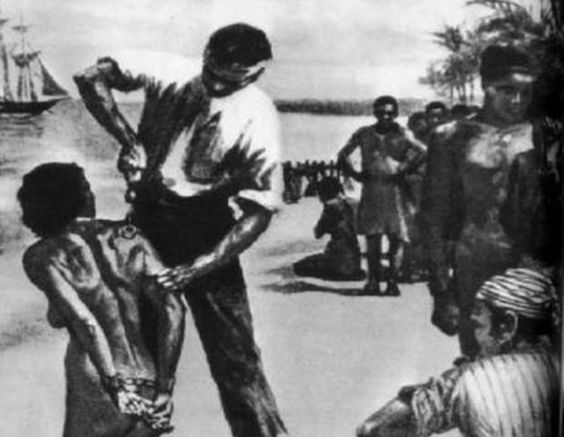 |
| See! African immigrant voluntarily preparing for a better life in the Americas! |
 |
| See! How eager these African voluntary immigrants are to get to the Americans and their new, better lives! |
Ignorant Ben Carson's doubling, tripling, etc. down this week on his preposterous lie that Africans came here as immigrants in search of a better life. He's the head of the Housing Agency. How is this even possible?
These people need to be ashamed!
President Trump’s ignorance about the fundamentals of US history is compounded by the team surrounding him. In his maiden address to his employees at the Department of Housing and Urban Development, Ben Carson equated the experiences of slaves and immigrants.
After calling America “a land of dreams and opportunity”, here were the astonishing words that followed: “There were immigrants who came here in the bottom of slave ships, worked even longer, even harder, for less. But they too had a dream that one day their sons, daughters, grandsons, granddaughters, great-grandsons, great-granddaughters might pursue prosperity and happiness in this land.”
Outrage was immediate. The secretary, who has the most prestigious academic credentials of anyone in the Trump Cabinet, clung to this idiocy in subsequent interviews. On Twitter, he went even further out on a limb, insisting, “You can be an involuntary immigrant.” Later, as the limb was sawed off, Carson finally retreated, this time on Facebook.
“I’m proud of the courage and perseverance of black Americans and their incomprehensible struggle from slavery to freedom,” his post stated. “I’m proud that our ancestors overcame the evil and repression that we know as slavery. The slave narrative and immigrant narrative are entirely different experiences. Slaves were ripped from their families and their homes and forced against their will after being sold into slavery by slave traders.” Despite his prior reference to “involuntary immigrants”, he added, “the immigrants made the choice to come to America.”
Tuesday, March 7, 2017
Long-Haired Kings + Cuba
. . . . I find myself missing writing here. I've been too busy, on too many fronts simultaneously, to think of stringing together sentences that make minimal sense about my reading and watching. Too busy even to watch anything, for that matter.
For instance for the last 10 days I've spent just about every day between 12:30 PM and 5 PM shopping for all the people in Cuba who need things they can't get there, things for us that we or the Travelers may need and which are hard if not impossible to get there, especially when constantly on the move.
And I still haven't started packing for myself! We leave here at the preposterous hour of 3 AM on Saturday in order to get to the airport, through security etc. and make a 6 AM flight.
I've watched very little television All this walking in this topsy-turvy temperature winter, carrying so many heavy bags, standing in long, slow lines at check-out -- because the customers and / or the technology have massive melt-downs, all at the same time, all the time now, it seems --my back hurts so much, and I'm so so stiff and sore that after making dinner and getting things cleaned up, sitting with my feet up and reading about the Merovingians is about all I can manage.
Yah, I'm still riding that hobby horse. I have been keeping rather extensive notes, and we've been talking about this in Another Place with others who are as ignorant as I am, but have gotten interested from my notes and so now are reading books as well. I do know more now than I did before beginning this project to educate myself at least a little in four centuries about which I knew little to nothing -- but I still know very little. It doesn't help that every historian of the 5th, 6th, 7th and 8th century will say at some point -- at many points -- "this is doubtful . . . we don't know much, if anything about" whatever it is.
vs. the Western Roman Empire that transformed, regenerated and transitioned into something new, dynamic and vital, incorporating the forms and structures of the old western empire while creating new things that better suited itself. Nor were there great barbarian invasions beyond, perhaps that of Attila's, which was defeated by a coalition of Other Barbarians who had transformed quite some time ago into Gallo-Romans -- and commerce and manufacture boomed particularly in the north, east and south to the Black Sea and Bosphorus, which brought luxury, expensive goods and coins (as well as mints) to all these cities that didn't lose their populations.
One of the players in this history field, James J. O'Donnell, characterizes this division of the field of Late Antiquity - Early Medieval History as the Reformers vs. the Counter-Reformationists. * The Counter-Reformationists believe the Western Roman Empire fell and ushered in the Dark Ages. The Reformers look hard at material history and what archeology has revealed in the last 50 years, particularly in the more northern reaches, including both the British Isles and the Nordic regions, and see a burgeoning of trade and commerce, and cities neither losing population and, in fact new cities founded to deal with their trade.
When it comes to American History I have positions on many figures and issues that have evolved out of life-long, deeply researched work. But in this history I am a novice, so I don't / can't have a position on this matter, only a leaning. I lean toward the side of the Reformers. We'd have guessed that would be the case as the Counter-Reformationists have accused the Reformers of shilling for the marxists and, more lately, now, catering to political correctness.
The books I've read or am reading about these centuries in Europe in the order I've read or am reading them:
A friend in Another Place is reading these -- the second two are Counter-Reformationists, and the first is a firm believer in the Dark Ages, though he blames Mohammed and Islam rather more than northeastern barbarians. The author was a practicioner of philosophical / pattern history, which I intensely dislike. Thus, the conversations there are quite lively:
-----------------------
* James O'Donnell himself lines up on the Reformers side of the division.
For instance for the last 10 days I've spent just about every day between 12:30 PM and 5 PM shopping for all the people in Cuba who need things they can't get there, things for us that we or the Travelers may need and which are hard if not impossible to get there, especially when constantly on the move.
And I still haven't started packing for myself! We leave here at the preposterous hour of 3 AM on Saturday in order to get to the airport, through security etc. and make a 6 AM flight.
I've watched very little television All this walking in this topsy-turvy temperature winter, carrying so many heavy bags, standing in long, slow lines at check-out -- because the customers and / or the technology have massive melt-downs, all at the same time, all the time now, it seems --my back hurts so much, and I'm so so stiff and sore that after making dinner and getting things cleaned up, sitting with my feet up and reading about the Merovingians is about all I can manage.
 |
| Depiction of Battle of the Catalaunian Fields (Chalons), where a coalition of "barbarians" defeated Attila the Hun's forces. |
Yah, I'm still riding that hobby horse. I have been keeping rather extensive notes, and we've been talking about this in Another Place with others who are as ignorant as I am, but have gotten interested from my notes and so now are reading books as well. I do know more now than I did before beginning this project to educate myself at least a little in four centuries about which I knew little to nothing -- but I still know very little. It doesn't help that every historian of the 5th, 6th, 7th and 8th century will say at some point -- at many points -- "this is doubtful . . . we don't know much, if anything about" whatever it is.
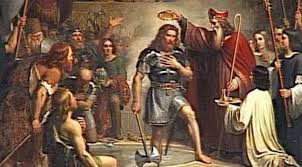 |
| Warriors, and Long-haired Kings: 5TH Century Rome and Frankia |
vs. the Western Roman Empire that transformed, regenerated and transitioned into something new, dynamic and vital, incorporating the forms and structures of the old western empire while creating new things that better suited itself. Nor were there great barbarian invasions beyond, perhaps that of Attila's, which was defeated by a coalition of Other Barbarians who had transformed quite some time ago into Gallo-Romans -- and commerce and manufacture boomed particularly in the north, east and south to the Black Sea and Bosphorus, which brought luxury, expensive goods and coins (as well as mints) to all these cities that didn't lose their populations.
One of the players in this history field, James J. O'Donnell, characterizes this division of the field of Late Antiquity - Early Medieval History as the Reformers vs. the Counter-Reformationists. * The Counter-Reformationists believe the Western Roman Empire fell and ushered in the Dark Ages. The Reformers look hard at material history and what archeology has revealed in the last 50 years, particularly in the more northern reaches, including both the British Isles and the Nordic regions, and see a burgeoning of trade and commerce, and cities neither losing population and, in fact new cities founded to deal with their trade.
When it comes to American History I have positions on many figures and issues that have evolved out of life-long, deeply researched work. But in this history I am a novice, so I don't / can't have a position on this matter, only a leaning. I lean toward the side of the Reformers. We'd have guessed that would be the case as the Counter-Reformationists have accused the Reformers of shilling for the marxists and, more lately, now, catering to political correctness.
The books I've read or am reading about these centuries in Europe in the order I've read or am reading them:
We're reading aloud to each other this one:Charlemagne by Derek Wilson -- this is outside the purview, but it was reading this biography last summer that put me onto the Merovingians in the first place;The Ruin of the Roman Empire: A New History by James J O'Donnell;The Long-Haired Kings by J.M. Wallace-Haddrill;Late Merovingian France: History and Hagiography 640-720 by Paul Fouracer and Richard Al Gerberding;Barbarians to Angels: The Dark Ages Reconsidered by Peter S. Wells -- he's an archeologist and definitely a Reformer.
The Merovingian Kingdoms 450 - 751 by Ian Wood -- this has been the narrative political history of the subject for quite some time;El V's reading this book himself, which focuses on the 'real' middle ages, with only a short summary of roughly 100 pages out of the 526 of these previous centuries that concludes with the chapter, "Consolidation of the Kingdoms" post Charlemagne's coronation as "emperor" (though he does partition it again among his sons!):
The Middle Ages by Johannes Fried (translated by Peter Lewis); Fried is a semi-Counter-Reformationist.I am also reading assorted, occasional articles from journals online and JSTOR.
A friend in Another Place is reading these -- the second two are Counter-Reformationists, and the first is a firm believer in the Dark Ages, though he blames Mohammed and Islam rather more than northeastern barbarians. The author was a practicioner of philosophical / pattern history, which I intensely dislike. Thus, the conversations there are quite lively:
Medieval Cities: Their Origins and the Revival of Trade; and, Mohammed and Charlemagne by Henri Pirenne, in which exposits his famous Pirenne Thesis -- which, among many others, I too have a difficult time accepting as Pirenne's focus is the south and the Mediterranean.
The Fall of Rome and the End of Civilization by Bryan Ward-Perkins;
The Fall of the Roman Empire: A New History by Peter Heather.I am reading other books too, but those are mostly about female personages in the era of the War of the Rebellion and in the Age of Horrors, er, the Gilded Age / Age of Innocence, and the history of the Ottomans, particularly in the 15th and 16th and 17th centuries. More about this later, probably a lot later, after returning from the Caribbean.
-----------------------
* James O'Donnell himself lines up on the Reformers side of the division.
Subscribe to:
Comments (Atom)




